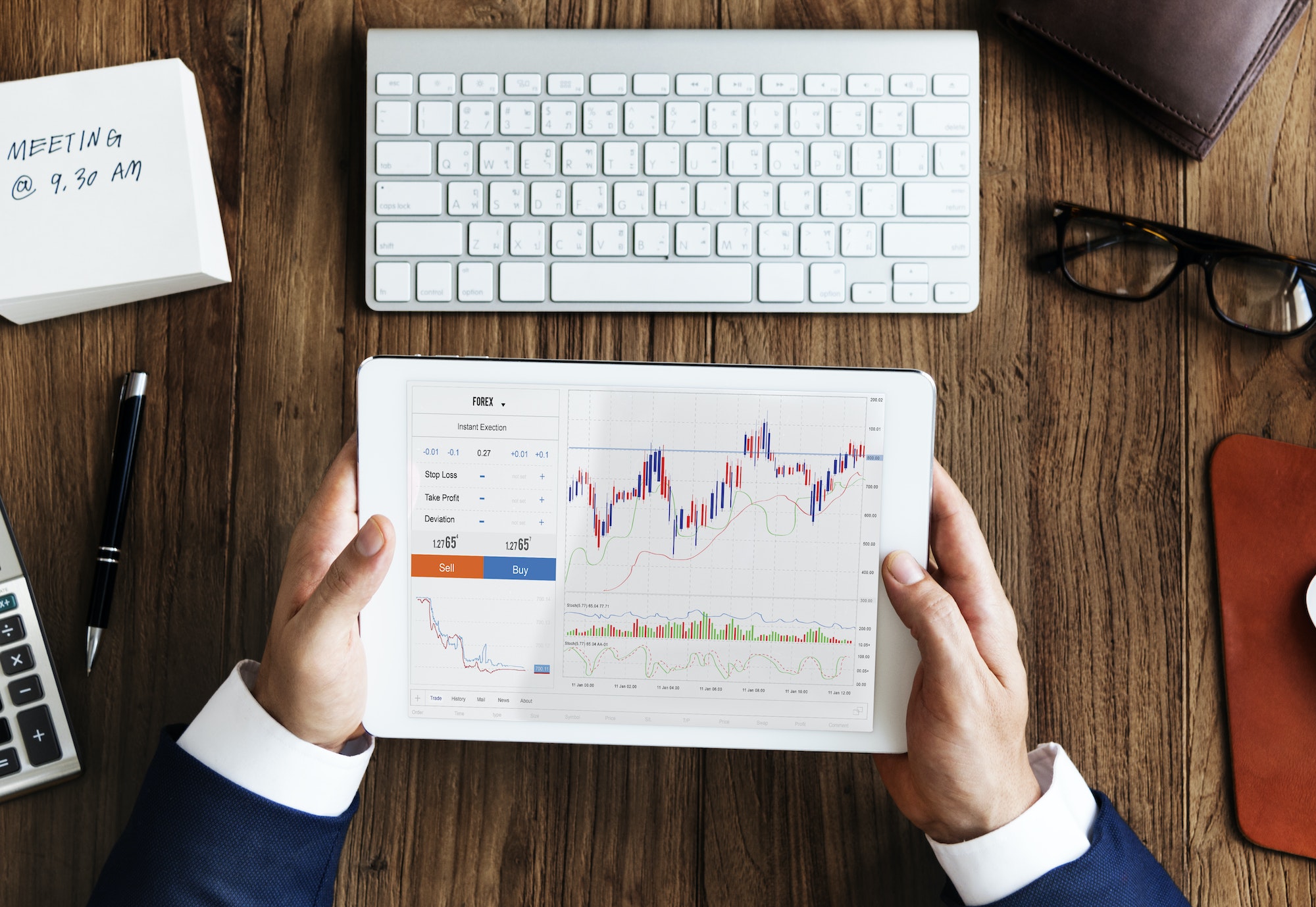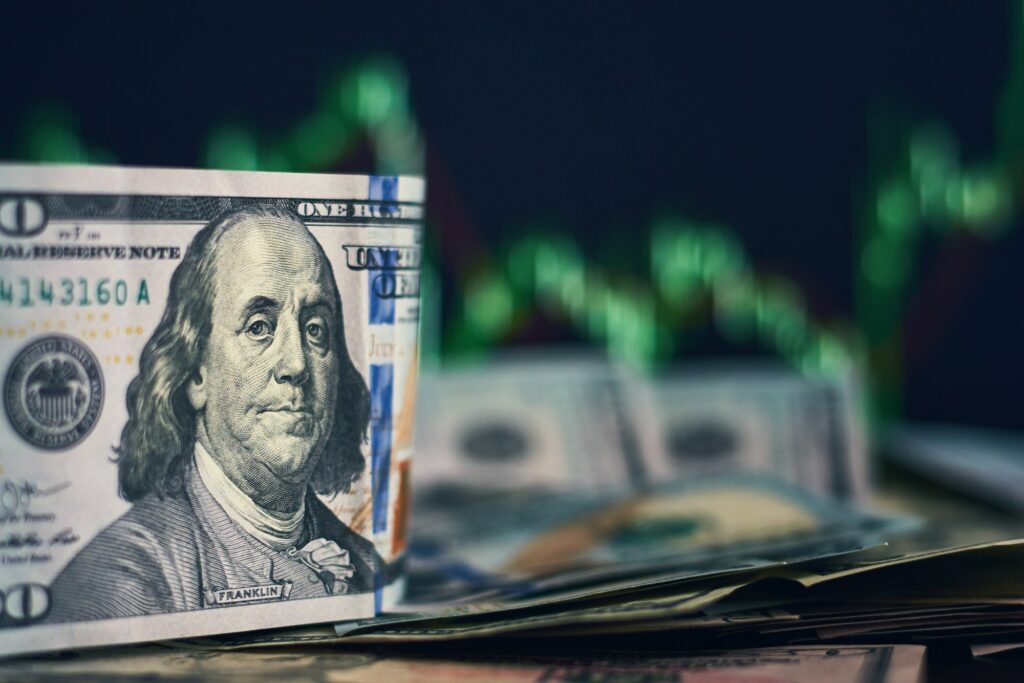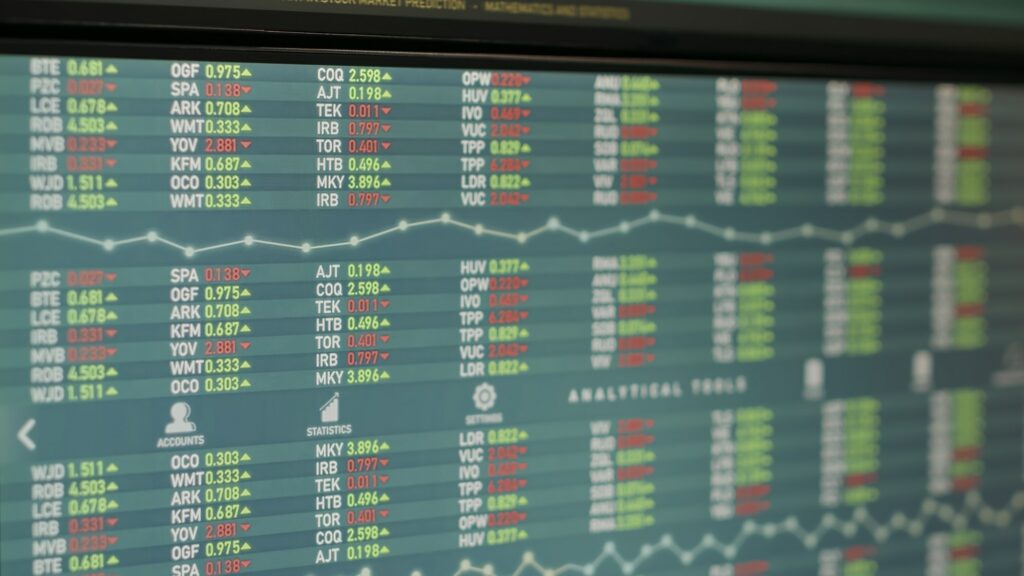Is Forex Trading Profitable?
Yes, Forex trading can be profitable — but it’s not a guaranteed path to wealth. While some traders generate consistent profits through strategic trading, market analysis, and sound risk management, others face heavy losses due to poor decision-making and market volatility.
The Forex market is the largest financial market in the world, with a daily trading volume exceeding $7.5 trillion (Bank for International Settlements, 2023). Its liquidity, accessibility, and leverage opportunities make it appealing to traders of all levels. However, profitability depends on your ability to manage risks, understand market dynamics, and apply winning strategies.
In this article, we’ll explore:
✅ How Forex trading works
✅ Why some traders succeed while others fail
✅ The most effective strategies for profitable Forex trading
✅ How to avoid common mistakes and improve your trading results
What is Forex?
Forex—short for “Foreign Exchange”—is the global marketplace where currencies are bought and sold. It’s the largest and most liquid financial market in the world, with a daily trading volume exceeding $7.5 trillion (Bank for International Settlements, 2023).
In Forex trading, you’re essentially speculating on the future value of one currency against another. Traders aim to profit from the price differences between currency pairs, driven by factors like interest rates, economic data, and geopolitical events.
How Forex Trading Works:
Forex trading always involves currency pairs because you’re buying one currency while selling another. Common pairs include:
- EUR/USD – Euro vs. US Dollar
- GBP/JPY – British Pound vs. Japanese Yen
- USD/JPY – US Dollar vs. Japanese Yen
How You Make a Profit:
✅ If the currency you buy increases in value compared to the one you sell, you make a profit.
✅ If the currency you buy decreases in value, you incur a loss.
The Forex market operates 24 hours a day, five days a week across major financial centers like:
- London
- New York
- Tokyo
- Sydney
This allows traders to take advantage of price movements at any time, making Forex one of the most accessible financial markets.
Example:
You decide to buy EUR/USD at 1.1000 because you expect the Euro to strengthen against the Dollar.
- If EUR/USD rises to 1.1050, you make a profit of 50 pips (price movement units).
- If it falls to 1.0950, you lose 50 pips.
👉 1 pip is the smallest price movement for most currency pairs and typically equals 0.0001 (except for pairs involving the Japanese Yen, where 1 pip = 0.01).
Why Forex?
- High liquidity means fast execution and low spreads.
- Market availability allows for trading flexibility.
- Leverage increases profit potential — but also risk.
Why Forex Trading Can Be Profitable
While Forex trading comes with inherent risks, it also offers unique advantages that make it an attractive and potentially profitable market. Its size, liquidity, and flexibility create opportunities for traders to capitalize on market movements and generate consistent returns — if approached strategically.
1. High Liquidity
The Forex market is the most liquid financial market in the world, with over $7.5 trillion traded daily (Bank for International Settlements, 2023). High liquidity provides several advantages:
✅ Fast order execution – Trades are processed almost instantly.
✅ Minimal slippage – The difference between the expected and actual execution price is small.
✅ Flexible entry and exit – You can open and close positions quickly without significantly impacting market prices.
High liquidity makes Forex less prone to price manipulation and ensures that even large trades can be executed without major price disruption.
2. 24/7 Market Accessibility
Unlike the stock market, which has set trading hours, the Forex market operates continuously from Sunday at 5 PM EST to Friday at 5 PM EST. This 24-hour cycle is possible because trading occurs across global financial hubs in:
- London (European session)
- New York (American session)
- Tokyo (Asian session)
- Sydney (Pacific session)
This means you can trade at any time that suits your schedule — whether you’re a full-time trader or just trading on the side.
3. Leverage: Amplify Your Profits (and Losses)
Forex brokers offer leverage, sometimes as high as 500:1, allowing you to control large positions with a relatively small capital investment.
Example:
- With 100:1 leverage, a $1,000 deposit can control a $100,000 trade.
- If the price moves 1% in your favor, you would make $1,000 — a 100% return on your initial deposit.
- Conversely, a 1% loss would wipe out your entire $1,000 deposit.
➡️ While leverage can magnify profits, it can also increase losses. That’s why experienced traders use risk management strategies like stop-loss orders to protect their capital.
4. Automation and Trading Tools
Most Forex brokers support powerful trading platforms like MetaTrader 4 (MT4) and MetaTrader 5 (MT5), which provide tools for automation and analysis:
✅ Automated trading – Use Expert Advisors (EAs) to automate your strategy.
✅ Backtesting – Test strategies against historical data to improve performance.
✅ Advanced charting – Access real-time market data and technical indicators.
Automation allows traders to execute strategies consistently and remove emotional decision-making — a major cause of poor trading performance.
5. Low Barriers to Entry
Forex trading is accessible to almost anyone due to low startup costs and available resources:
✅ Low minimum deposits – You can start trading with as little as $10.
✅ Free demo accounts – Practice with virtual funds before using real money.
✅ Educational resources – Countless free tutorials, webinars, and guides are available online.
This makes Forex trading one of the most beginner-friendly markets — but success still requires learning and discipline.
Why Forex Trading Can Be Risky
While Forex trading offers significant profit potential, it also carries inherent risks that can lead to substantial losses — especially for inexperienced traders. The same factors that create profit opportunities, such as volatility and leverage, can also amplify losses if not properly managed. Understanding these risks is crucial for long-term success in Forex trading.
1. Volatility
The Forex market is known for its high volatility, with rapid price swings driven by:
- Economic reports – Key data releases like Non-Farm Payrolls (NFP), inflation rates, and GDP growth can cause sharp market reactions.
- Central bank policies – Interest rate changes or quantitative easing announcements from major central banks (like the Federal Reserve or ECB) can drastically affect currency values.
- Geopolitical events – Political instability, wars, elections, and trade tensions can lead to unpredictable price movements.
➡️ How Volatility Affects Trading:
✅ Volatility creates opportunities for quick profits.
❌ But sudden, sharp price swings can trigger stop-loss orders or cause significant losses if you’re on the wrong side of the trade.
Example:
- If you’re trading EUR/USD with a tight stop-loss of 20 pips, an unexpected central bank statement could cause the pair to move 50 pips in seconds — leading to a swift loss.
2. Overleveraging
Leverage allows you to control large positions with relatively small capital, but it’s a double-edged sword. While it can magnify profits, it can also magnify losses — and quickly wipe out your account.
Example:
- With 100:1 leverage, a $1,000 deposit allows you to control a $100,000 position.
- A 0.5% price movement in your favor would equal a $500 profit — a 50% return on your deposit.
- However, a 0.5% movement against you would result in a $500 loss — wiping out half your account.
➡️ Why Overleveraging Is Dangerous:
✅ It increases profit potential.
❌ But a small unfavorable market movement can lead to a margin call, forcing you to close your position at a loss.
✅ Pro Tip: Successful traders use conservative leverage (e.g., 10:1 or lower) and protect their positions with stop-loss orders to avoid catastrophic losses.
3. Emotional Trading
Emotions are one of the biggest obstacles to consistent profitability in Forex trading. Fear, greed, and overconfidence can lead to impulsive decisions that derail even the best trading strategies.
Common Emotional Traps:
- Fear: Closing winning trades too early or avoiding trades altogether.
- Greed: Overtrading or risking too much to chase bigger profits.
- Overconfidence: Doubling down on losing trades, believing the market will “turn around.”
➡️ How to Control Emotions:
✅ Stick to a clear trading plan.
✅ Set realistic profit and loss targets.
✅ Use stop-loss and take-profit orders to automate your exits.
Example:
- After three losing trades in a row, you may be tempted to place a large “revenge trade” to recover losses — which often results in even bigger losses.
➡️ Experienced traders remove emotions by relying on data, analysis, and automated strategies rather than gut feelings.
How to Make Forex Trading Profitable
While Forex trading can be risky, profitability is achievable with the right strategies and disciplined execution. Successful traders don’t rely on luck — they follow structured plans, manage risk carefully, and continuously adapt to market conditions. Here are the key strategies that increase your chances of consistent profitability:
1. Develop a Clear Trading Strategy
A solid trading strategy provides structure and eliminates guesswork. Professional traders define their strategy based on key components:
✅ Entry and Exit Points – Identify specific price levels or patterns to enter and exit trades.
✅ Risk-Reward Ratio – Aim for a ratio of at least 2:1 (potential reward should be twice the risk).
✅ Position Sizing – Adjust trade size based on your account size and risk tolerance.
Example:
- If you risk $100 per trade with a 2:1 risk-reward ratio, you should aim to make at least $200 on a winning trade.
- If you win 50% of your trades at this ratio, you’ll be profitable over time.
✅ Example Strategy:
- Trade EUR/USD based on the 50-day moving average.
- Enter when price breaks above the moving average.
- Set stop-loss 20 pips below the entry.
- Set take-profit at 40 pips (2:1 risk-reward).
➡️ Having a defined strategy helps remove emotional decisions and increases consistency.
2. Use Technical and Fundamental Analysis
Successful traders combine both technical and fundamental analysis to understand market behavior and make informed decisions.
Technical Analysis
Technical analysis involves studying historical price data and identifying patterns to predict future movements.
- Use indicators like Moving Averages, Relative Strength Index (RSI), and Fibonacci retracements.
- Identify support and resistance levels to find optimal entry and exit points.
Example:
- If EUR/USD is trading near a strong support level and RSI indicates oversold conditions, it might be a good buy signal.
Fundamental Analysis
Fundamental analysis focuses on macroeconomic data and news events that affect currency prices.
- Monitor interest rates, inflation, and GDP growth.
- Track central bank policy announcements and geopolitical events.
Example:
- If the Federal Reserve raises interest rates, the USD is likely to strengthen against other currencies.
➡️ Combining technical and fundamental analysis helps you see the full market picture and avoid one-dimensional decision-making.
3. Apply Risk Management
Even the best strategy will fail without proper risk management. The goal is to protect your capital so you can survive losing streaks and stay in the game long enough to capitalize on winning trades.
✅ Limit Leverage:
- Beginners should avoid using leverage higher than 10:1.
- Higher leverage increases the risk of margin calls and account wipeouts.
✅ Use Stop-Loss Orders:
- A stop-loss automatically closes your position if the price moves against you.
- This prevents large losses from unexpected market swings.
✅ Never Risk More Than 2% Per Trade:
- If your account size is $10,000, limit your risk per trade to $200.
- This ensures that even after five consecutive losses, you still retain 90% of your capital.
Example:
- If you enter a EUR/USD trade at 1.1000 with a stop-loss at 1.0980 (20 pips) and you’re risking $100:
- Trade size = 100 / 20 pips = $5 per pip.
➡️ Managing risk allows you to stay in the market long enough to take advantage of profitable opportunities.
4. Manage Your Emotions
Emotions are the enemy of profitability in Forex trading. Fear and greed often cause traders to deviate from their plan and make irrational decisions.
✅ Avoid Revenge Trading:
- After a losing trade, don’t immediately open a larger position to “get even.”
- Take a break, reassess the market, and stick to your plan.
✅ Follow Your Strategy:
- Don’t chase the market or abandon your plan after a loss.
- Trust your analysis and maintain consistency.
✅ Set Realistic Expectations:
- Don’t expect to double your account overnight.
- Professional traders aim for consistent monthly returns of 2%–5% — not quick wins.
Example:
- After three losing trades, an emotional trader might increase the next trade size to recover losses — often resulting in a bigger loss.
- A disciplined trader would stick to the plan and maintain consistent trade sizes.
➡️ The best traders are calm, patient, and disciplined — even during losing streaks.
Common Mistakes That Prevent Profitability
Even experienced traders can fall into patterns that undermine their profitability. Forex trading success isn’t just about finding a winning strategy — it’s about avoiding common pitfalls that can drain your account and ruin long-term performance. Here are the most frequent mistakes that prevent traders from achieving consistent profits:
1. Trading Without a Plan
A trading plan defines your:
- Entry and exit points
- Risk-reward ratio
- Trade size
Without a plan, you’re essentially gambling — relying on gut feelings and luck rather than a structured strategy.
Example:
- A trader sees EUR/USD rising and jumps in without defining a stop-loss or take-profit target.
- When the price reverses, they panic and close the trade — locking in a loss.
➡️ Successful traders follow a well-defined plan and adjust it based on market conditions — not emotions.
2. Ignoring Risk Management
Failing to manage risk is the fastest way to blow up a trading account. Professional traders focus on capital preservation first and profit-making second.
✅ Never risk more than 2% of your account on a single trade.
✅ Use stop-loss orders to prevent large losses.
✅ Adjust trade size based on market conditions.
Example:
- If your account is $10,000 and you risk 5% ($500) on a single trade, two consecutive losses could drop your balance by 10% — making it harder to recover.
- Risking 1%–2% per trade allows you to survive losing streaks without depleting your capital.
➡️ Protecting your capital ensures you stay in the game long enough to capitalize on profitable trades.
3. Overleveraging
Leverage magnifies both profits and losses. Using excessive leverage can wipe out your account quickly — even with small market movements.
✅ Keep leverage low (e.g., 10:1 or lower) if you’re a beginner.
✅ Use stop-loss orders to protect against large moves.
Example:
- With 100:1 leverage, a 1% unfavorable price move can result in a 100% loss of your deposit.
- With 10:1 leverage, that same move would only result in a 10% loss — giving you time to recover.
➡️ Conservative leverage gives you more flexibility and reduces the risk of a margin call.
4. Chasing Losses
After a losing trade, it’s tempting to “make it back” quickly by increasing trade size or taking impulsive trades — this often leads to even larger losses.
✅ Accept losses as part of the process.
✅ Stick to your strategy even after multiple losing trades.
Example:
- After losing $500, a trader increases their position size to $2,000 to “get back to even.”
- The next trade fails, wiping out most of their account.
➡️ Profitable traders are patient and focus on long-term consistency — not immediate recovery.
5. Not Learning From Mistakes
Many traders repeat the same mistakes without adjusting their strategy or mindset.
✅ Keep a trading journal to track wins, losses, and decisions.
✅ Regularly review your trades to identify patterns and mistakes.
✅ Adjust your strategy based on market feedback.
Example:
- A trader notices that most of their losing trades occur during high-volatility events (e.g., NFP reports).
- They adjust their strategy to avoid trading during these events — improving long-term results.
➡️ Successful traders evolve by learning from mistakes and adjusting their approach over time.
How to Start Forex Trading (Even with Limited Capital)
Starting Forex trading can be challenging if you have limited funds — but proprietary trading firms (or prop firms) provide a solution. Prop firms allow traders to access large capital without putting their own money at risk. This makes Forex trading more accessible and gives traders the ability to scale their strategies without needing a large personal investment.
➡️ Prop Firms provide funded accounts, allowing you to trade larger positions without risking your own capital.
Benefits of Prop Firms:
Joining a prop firm offers several key advantages:
✔️ Keep Up to 90% of Profits
- Most prop firms offer traders a profit split between 70%–90%.
- The more consistent you are, the higher your potential payout.
✔️ Trade with Large Capital
- Personal capital is often limited — prop firms provide access to accounts ranging from $10,000 to over $500,000.
- Larger capital allows you to use proper risk management while aiming for higher profits.
✔️ Professional Coaching and Tools
- Many prop firms offer access to:
- Trading courses and market analysis
- Professional coaching from experienced traders
- Advanced trading platforms (like MetaTrader 4 and MetaTrader 5)
Best Prop Firm to Start With
If you want to trade with larger capital but don’t have the funds to start, joining a proprietary (prop) trading firm can be great. Prop firms provide funded accounts, allowing you to trade with the firm’s capital while keeping a share of the profits.
Looking for the Most Affordable Prop Firms?
If you’re starting with a limited budget, check out this list of the cheapest prop firms available:
Cheapest Prop Firms – FundedTrading.com
This list provides a detailed comparison of the most cost-effective options, helping you find a prop firm that suits your trading style and financial situation.
Conclusion: Can Forex Trading Be Profitable?
Yes, Forex trading can be highly profitable — but only with the right strategy, disciplined risk management, and a clear understanding of market dynamics.
- Use leverage wisely
- Develop a structured trading plan
- Avoid emotional decisions
- Continuously improve your skills
If you’re ready to start your Forex journey, consider joining a reputable prop firm to access professional tools, expert coaching, and instant funding.






